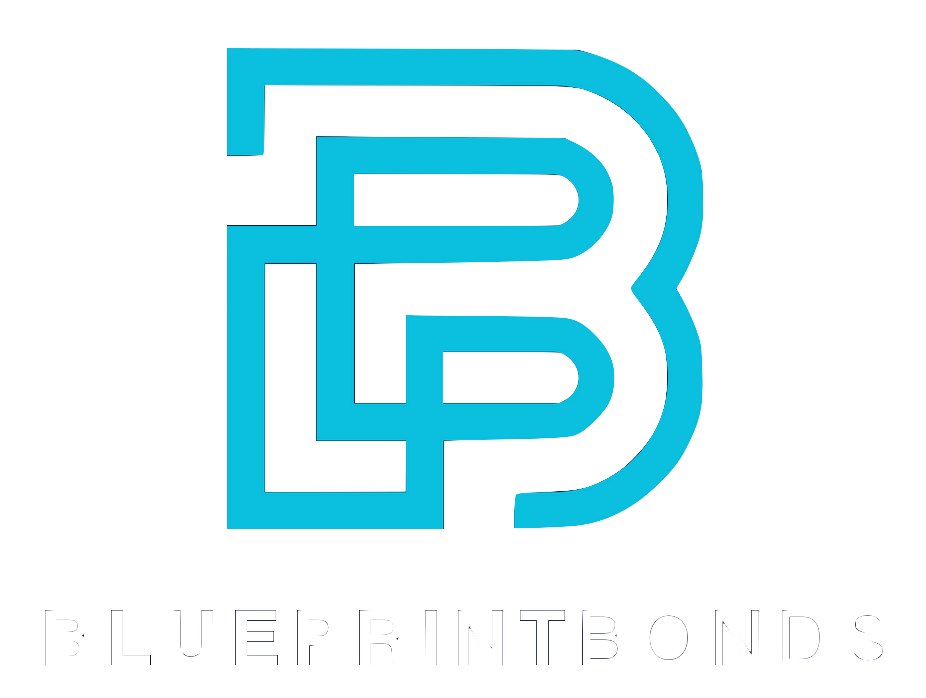In the complex world of contracting, maintaining robust internal controls is not just a best practice—it’s a necessity. Federal agencies, private clients, sureties, and lenders increasingly demand transparency and accountability from contractors to mitigate risks such as fraud, waste, and mismanagement. According to the Government Accountability Office, significant internal control deficiencies in federal contracting processes have led to increased risks of improper payments and other financial irregularities. This highlights the critical importance of implementing effective control systems within contracting businesses. For contractors aiming to elevate their operational integrity and financial health, a comprehensive internal controls checklist is an invaluable tool.
This article delves into the essential internal controls every contractor should have in place, drawing on expert insights and recent developments in compliance. Whether you operate a small subcontracting firm or a large construction company, the following guidance will help you safeguard your business, improve compliance, and build trust with stakeholders.
Why Internal Controls Matter for Contractors
Internal controls are processes and procedures designed to ensure the integrity of financial and operational activities. For contractors, these controls serve multiple purposes: they reduce the risk of fraud, ensure compliance with contractual and legal requirements, and enhance the accuracy of financial reporting. The Subcontractors Association of Delaware Valley emphasizes that strong internal controls are crucial for contractors to mitigate business risks and gain confidence from sureties, lenders, and clients.
Moreover, effective internal controls can provide significant operational and financial benefits beyond risk mitigation. Deloitte’s industry report highlights that these controls help improve business value by streamlining processes, preventing errors, and fostering a culture of accountability. This is especially important in the construction and contracting sectors, where project complexity and multiple subcontractors increase exposure to risks.
Given these benefits, contractors who neglect internal controls expose themselves to financial losses, reputational damage, and potential legal consequences. The Department of Justice’s recent update to its "Evaluation of Corporate Compliance Programs" guidance underscores the importance of evolving internal controls to address emerging technologies and whistleblower protections, signaling that regulatory scrutiny is only intensifying.
In addition to the financial implications, internal controls also play a pivotal role in enhancing communication and collaboration among project teams. By establishing clear protocols for reporting and accountability, contractors can ensure that all team members are aligned with project goals and expectations. This not only minimizes misunderstandings but also fosters a more cohesive work environment, where everyone feels responsible for the project's success. Such collaboration is particularly vital in large-scale projects, where the coordination of various subcontractors and suppliers can become complex and challenging.
Furthermore, the implementation of robust internal controls can also lead to improved decision-making processes. With accurate data and reliable reporting systems in place, contractors can make informed choices regarding resource allocation, project timelines, and budget management. This data-driven approach not only enhances operational efficiency but also positions contractors to respond swiftly to market changes or unexpected challenges, ultimately contributing to their competitive advantage in the industry. As the construction landscape continues to evolve, the ability to adapt and make strategic decisions based on solid internal controls will be a key differentiator for successful contractors.
Core Components of an Internal Controls Checklist
Developing a thorough internal controls checklist tailored to contracting activities involves addressing several key areas. Below is a breakdown of the core components that contractors should include in their internal control systems.
1. Financial Controls
Financial controls are the backbone of any internal control system. They help ensure that financial transactions are authorized, recorded accurately, and reported timely. For contractors, this includes:
- Invoice Approval Processes: Implementing proper invoice review and approval procedures helps prevent unauthorized payments and duplicate billing. Lang Allan & Company CPA PC recommends dual signatures on checks and clear segregation of duties to reduce fraud risks.
- Payroll Audits: Conducting surprise payroll audits ensures that payments correspond to actual work performed and authorized employees, deterring ghost employees and payroll fraud.
- Budget Monitoring: Regularly comparing actual expenses against budgets helps identify variances early and supports better project cost management.
In addition to these measures, contractors should also consider implementing automated financial systems that can streamline the approval process and provide real-time tracking of expenses. This technology not only enhances accuracy but also allows for quicker adjustments to budgets as project dynamics change. Moreover, establishing a clear policy for expense reimbursements can further solidify financial controls by ensuring that all claims are substantiated with proper documentation and approvals.
2. Operational Controls
Operational controls focus on the effectiveness and efficiency of business processes. For contractors, these controls are vital to maintaining quality and compliance throughout project execution.
- Contract Compliance Checks: Verifying that subcontractors and suppliers meet contractual obligations helps prevent delays and cost overruns.
- Inventory and Asset Management: Tracking materials and equipment reduces theft and loss, ensuring resources are available when needed.
- Safety and Compliance Audits: Regular inspections and adherence to safety protocols protect workers and reduce liability risks.
Furthermore, integrating project management software can enhance operational controls by providing a centralized platform for tracking progress, deadlines, and resource allocation. This not only improves communication among team members but also allows for better forecasting of potential issues before they escalate. Additionally, establishing a feedback loop with subcontractors can ensure that operational practices are continuously improved, promoting a culture of accountability and excellence.
3. Risk Management and Compliance Controls
Contractors face a variety of compliance requirements, from labor laws to environmental regulations. Integrating risk management into internal controls helps identify and mitigate potential compliance breaches.
- Whistleblower Protections: Encouraging and protecting employees who report unethical behavior supports a culture of transparency, a focus emphasized in the Department of Justice’s updated compliance guidance.
- Data Access Controls: Limiting access to sensitive financial and project data helps prevent unauthorized use or breaches.
- Regular Training: Educating staff on compliance requirements and ethical standards ensures everyone understands their responsibilities.
In addition to these strategies, contractors should also conduct regular risk assessments to identify emerging threats and vulnerabilities within their operations. This proactive approach allows for the timely implementation of controls that can mitigate risks before they become significant issues. Furthermore, establishing a compliance committee can provide ongoing oversight and ensure that all team members are aligned with the latest regulatory changes and best practices, fostering a robust compliance culture throughout the organization.
Implementing Effective Internal Controls: Practical Steps
Having a checklist is one thing; effectively implementing internal controls is another. Contractors should approach this task strategically to maximize benefits.
Assess Existing Controls
Start by evaluating your current control environment. A survey published in Current Issues in Auditing found that organizations with strong internal control elements report higher financial reporting quality. Use this insight to benchmark your controls against industry best practices and identify gaps. Additionally, consider conducting interviews with key personnel to gather qualitative data on how existing controls are perceived and utilized in practice. This can provide a more comprehensive view of your control environment and highlight areas that may require immediate attention or enhancement.
Customize Controls to Your Business
Every contracting business is unique, so tailor your internal controls accordingly. Small businesses, for example, can benefit from customizable internal control forms and checklists like those offered by Vitalics, which simplify implementation and ensure coverage of essential areas. Furthermore, engaging employees in the customization process can foster a sense of ownership and accountability, making them more likely to adhere to the established controls. Workshops or training sessions can be organized to educate staff on the importance of these controls and how they can contribute to the overall success of the business.
Leverage Technology
Modern software solutions can automate many control functions, such as invoice approvals and payroll audits, reducing human error and increasing efficiency. Integrating technology also aligns with the Department of Justice’s emphasis on addressing emerging technologies in compliance programs. Moreover, consider utilizing data analytics tools to monitor transactions in real-time, allowing for immediate detection of anomalies or irregularities. This proactive approach not only enhances compliance but also empowers management to make informed decisions based on accurate and timely information.
Regular Monitoring and Updating
Internal controls are not static. Regularly monitor their effectiveness through audits and adjust them to reflect changes in regulations, business operations, or emerging risks. SafetyCulture’s free internal control checklist can be a useful tool for ongoing assessments focused on financial reporting, compliance, and operational efficiency. Additionally, establishing a feedback loop where employees can report issues or suggest improvements can lead to continuous enhancement of the control environment. By fostering an open dialogue, organizations can adapt more swiftly to changes and ensure that their internal controls remain robust and effective over time.
Best Practices for Construction Contractors
Construction contractors face unique challenges that require specialized internal controls. Lang Allan & Company CPA PC recommends several best practices tailored to this industry:
- Dual Signatures on Checks: This control reduces the risk of unauthorized disbursements.
- Surprise Payroll Audits: These help detect and prevent payroll fraud, which can be prevalent in construction firms.
- Proper Invoice Approval: Ensuring invoices are reviewed and approved by multiple personnel before payment prevents errors and fraud.
Additionally, maintaining strict segregation of duties, especially in project management and financial reporting, helps prevent conflicts of interest and enhances accountability. This practice not only safeguards the financial integrity of the organization but also fosters a culture of transparency and trust among team members. By clearly delineating roles and responsibilities, contractors can ensure that no single individual has control over all aspects of a financial transaction, thereby mitigating the risk of fraud and mismanagement.
Moreover, implementing regular training sessions for staff on compliance and ethical standards can significantly enhance awareness of potential risks. These sessions can cover topics such as recognizing signs of fraud, understanding the importance of internal controls, and the legal implications of financial misconduct. By investing in employee education, construction firms can cultivate a proactive approach to risk management, empowering their workforce to be vigilant and responsible stewards of the company's resources.
Conclusion: Building a Culture of Accountability
For contractors, internal controls are more than just checkboxes—they are foundational to building a culture of accountability, transparency, and trust. Given the increasing scrutiny from government agencies and private clients alike, investing in a comprehensive internal controls checklist is a strategic imperative.
By focusing on financial accuracy, operational efficiency, and compliance adherence, contractors can protect their businesses from risks and position themselves for sustainable growth. Resources such as the Government Accountability Office’s findings on federal contracting deficiencies and the Subcontractors Association of Delaware Valley’s guidance underscore the urgency of strengthening internal controls.
Ultimately, the goal is to create a resilient organization capable of navigating the complexities of contracting with confidence and integrity.
For contractors looking to deepen their understanding and implementation of internal controls, exploring resources like
GAO’s report on internal control deficiencies and
the Subcontractors Association of Delaware Valley’s key controls is highly recommended.




